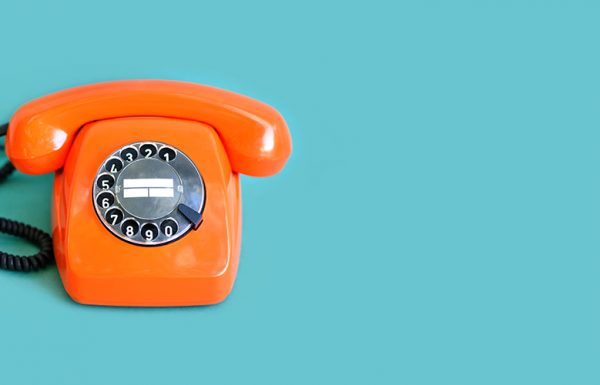Why Analog Moments Matter

Who remembers when the telephone was bolted to the kitchen wall and had a cord that was 17 feet long because you had to stretch it to get the receiver all the way into the living room so that no one could hear your conversation?
I do. And I’m proud of it. Because analog is back.
Maker Faires are thriving, Polaroids are a thing again and vintage clothes are fashionable among those in the know. I believe these are all natural reactions to seismic changes in technology and the ways in which we interact with objects. Smart creators of pop-up experiences have embraced this revived appreciation for all things low-tech and hands-on.
People are feeling a palpable longing for some good, old-fangled interaction; the slight drag as pen moves across paper, the scent of an old book, the feel of the weight of a phone receiver. It’s not so much that old is new again. Rather, it is a love of authenticity and a desire to connect with one’s past with a new and wiser perspective.
This is why pop-up retail is so popular. Surprise shops, unexpected eateries and disruptive happenings are all settings for tangible brand interaction.
Here are a few reasons why yesterday’s gadgets, technologies and ways of working have seen a renaissance.
Holding something forges a relationship.
Physical touch is a singular experience, creating a specific haptic bond, even with inanimate objects. Textures and touch hot-stamp our memories with emotion. That’s why running a hand over the polished fender of a ’58 Impala at a pop-up showroom brings some Boomers back to their carefree teenage years.
It’s very difficult to create a physical bond with an iTunes thumbnail. Many of the experiences we’ve had in the past – reading a newspaper, sketching a model, penning a poem, playing an arcade game – now come to us by way of glowing screens and digital devices. That’s not to say that these new ways of working and interacting are bad, but where they excel in efficiency and transferability, they can fall short in connection and permanence.
Aged things connect us with history.
For a growing number of shoppers, there is value in connecting with a time period before their own. Sure, some of it is probably a fascination with “otherness”; something we didn’t grow up with has an alien nature to it, a patina of legitimacy because it came from a “simpler time.” But some of the appeal is rooted in curiosity about how things were done before. Not just for novelty’s sake, but because those experiences provide a unique interaction that modern creation doesn’t always afford us.
There is also an archaeological aspect to the search, a seeking for truth in what other generations did. What was it like? How do their creative impulses and executions compare to the way I do things? These are valid questions that need to be worked out, and sometimes the “analog way” is the best path to explore.
Making something tangible is a rich experience.
The act of connecting to an activity in a physical manner builds a physical memory and satisfaction that mediated experiences can’t match. The output is something that can be held, turned over, cherished, filed and admired. That is why successful pop-ups often have a “try it yourself” component.
While technology has tried to recreate these interactions (like Kindle page flips or the desk blotter in a notes app), they come off as pale imitations of analog experiences. Building, assembling or initiating creation with some physical expression leaves a lasting imprint on the world and the creator herself.
When we’re hands-on, we belong.
In discovering analog methods of creation or consumption, we seek to connect with other like-minded folks. Not everyone will appreciate these analog experiences, but in finding fellow students of physicality, we are also seeking a tie with a group, tribe, or class of others who fundamentally understand us.
Bonds seem fragile and scarce in a wired world that offers one-dimensional versions of “community” at the hands of Facebook, Tinder and Instagram. The really great pop-ups demonstrate that shared physical experiences are often more meaty than their appetizer-size digital counterparts.